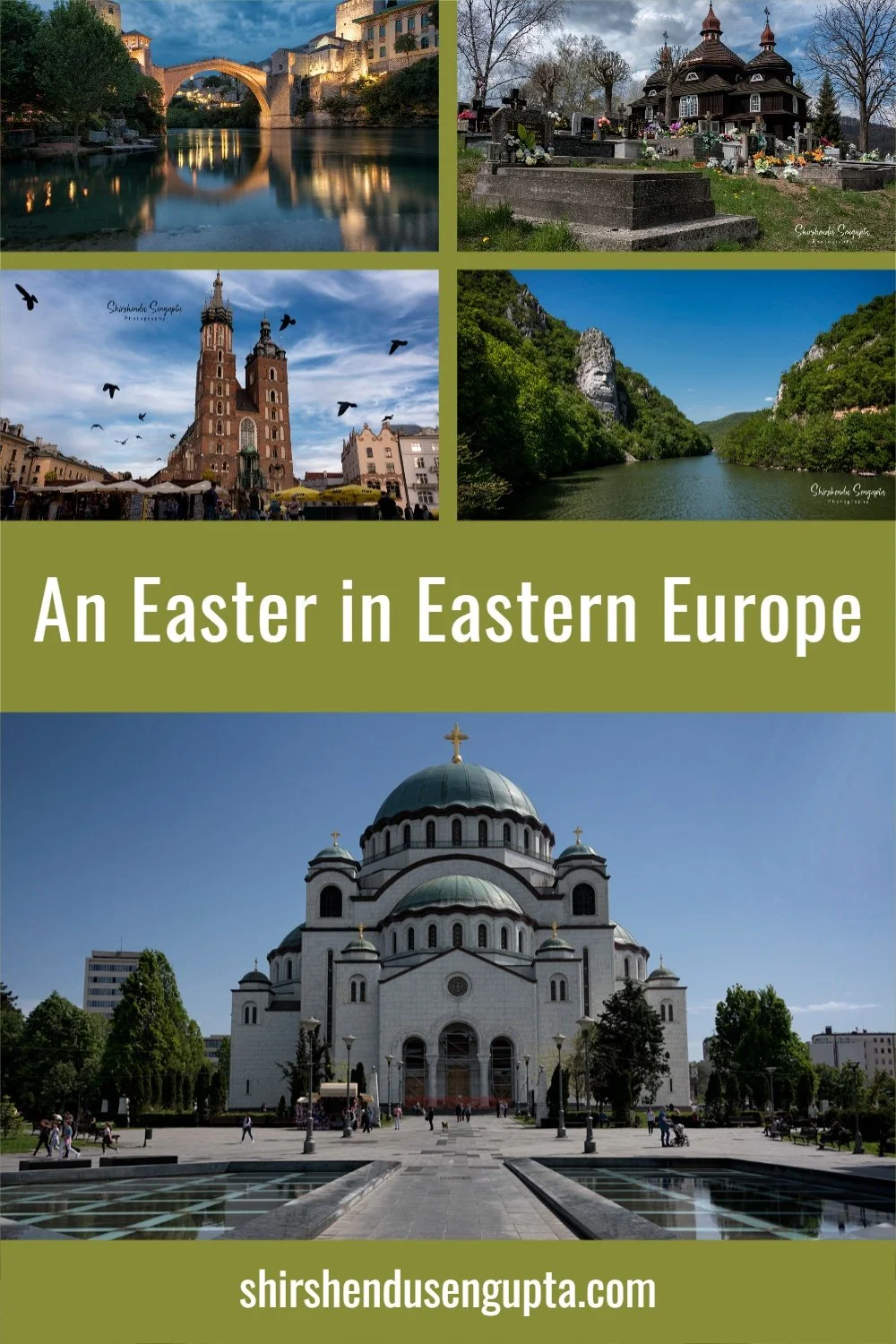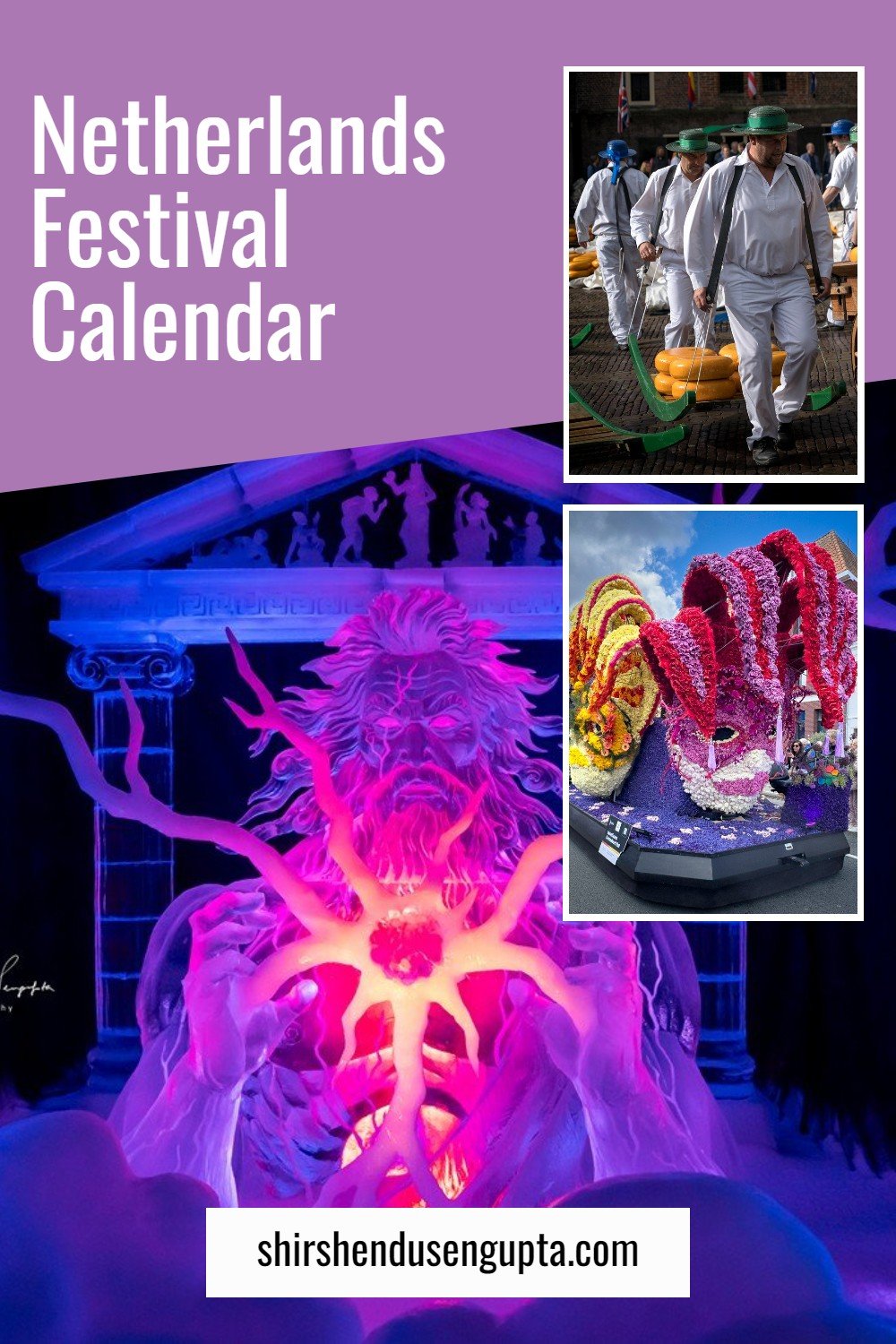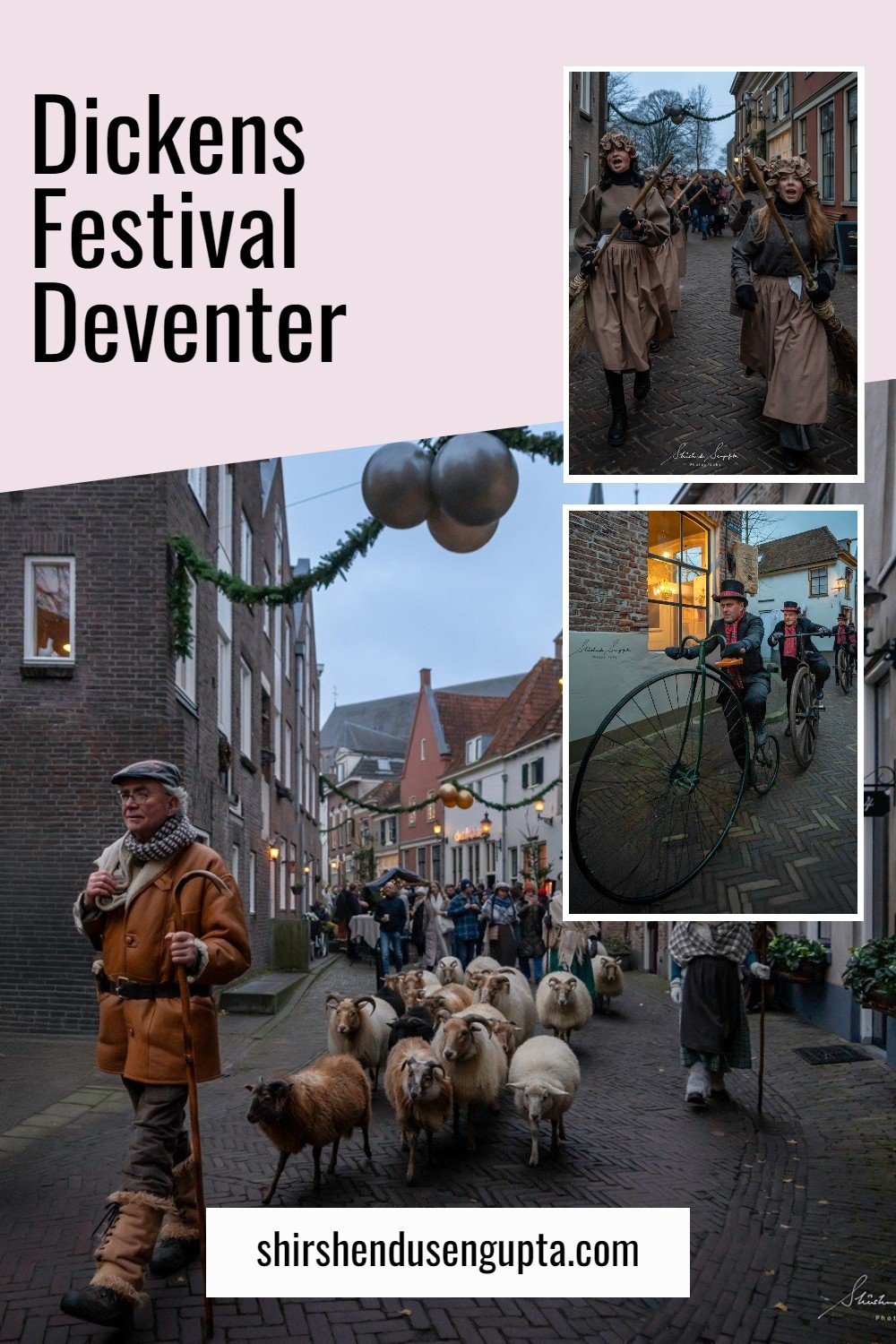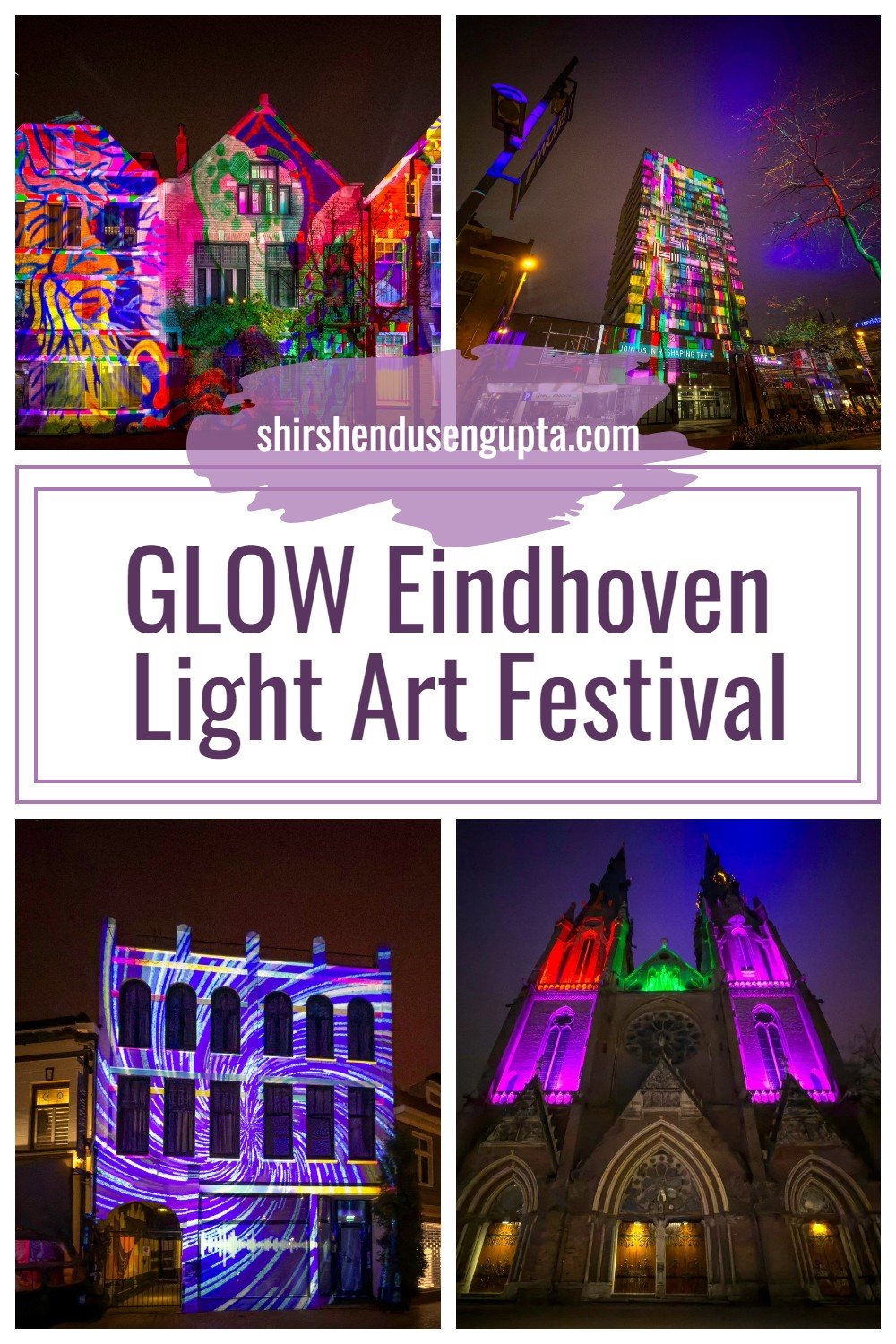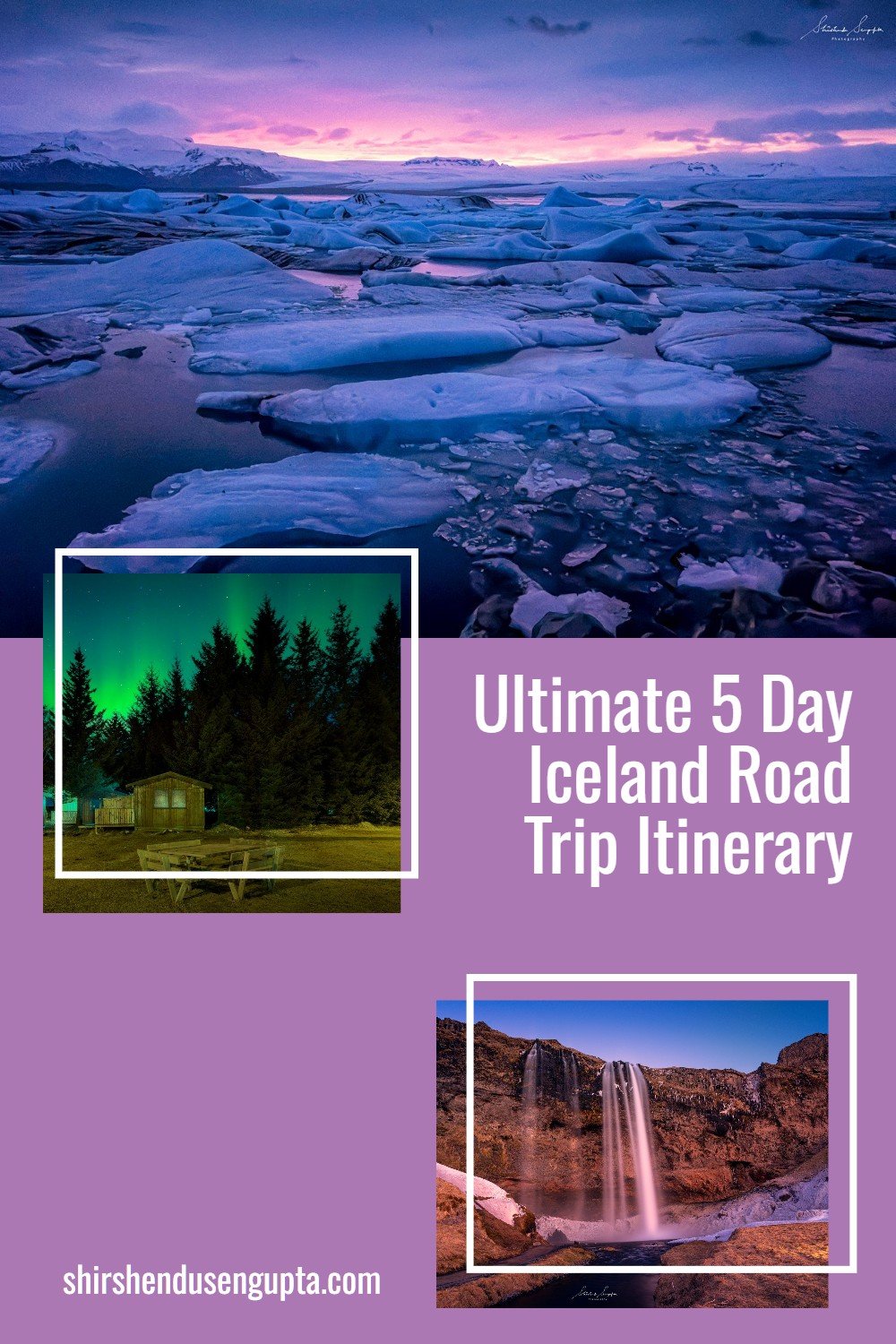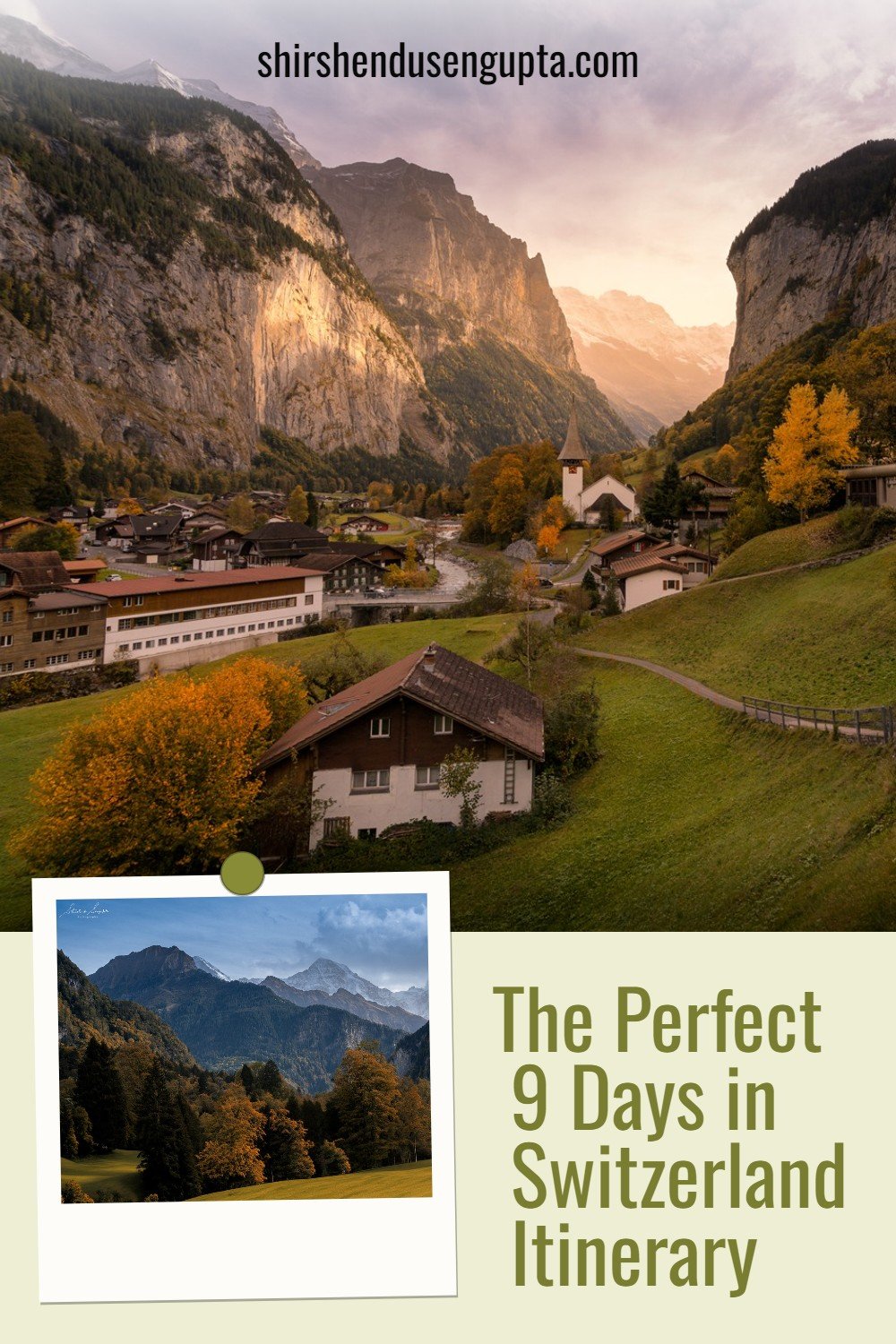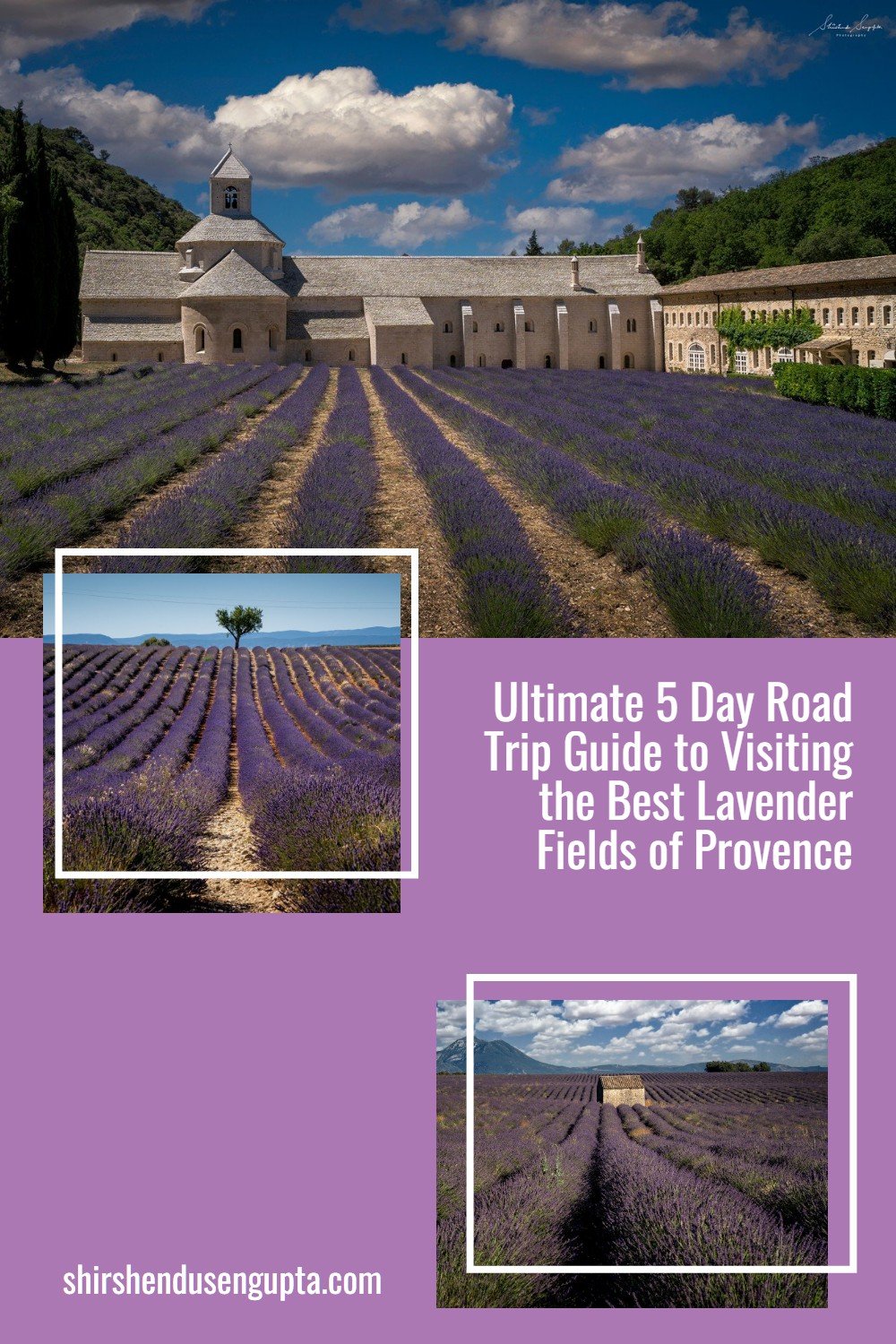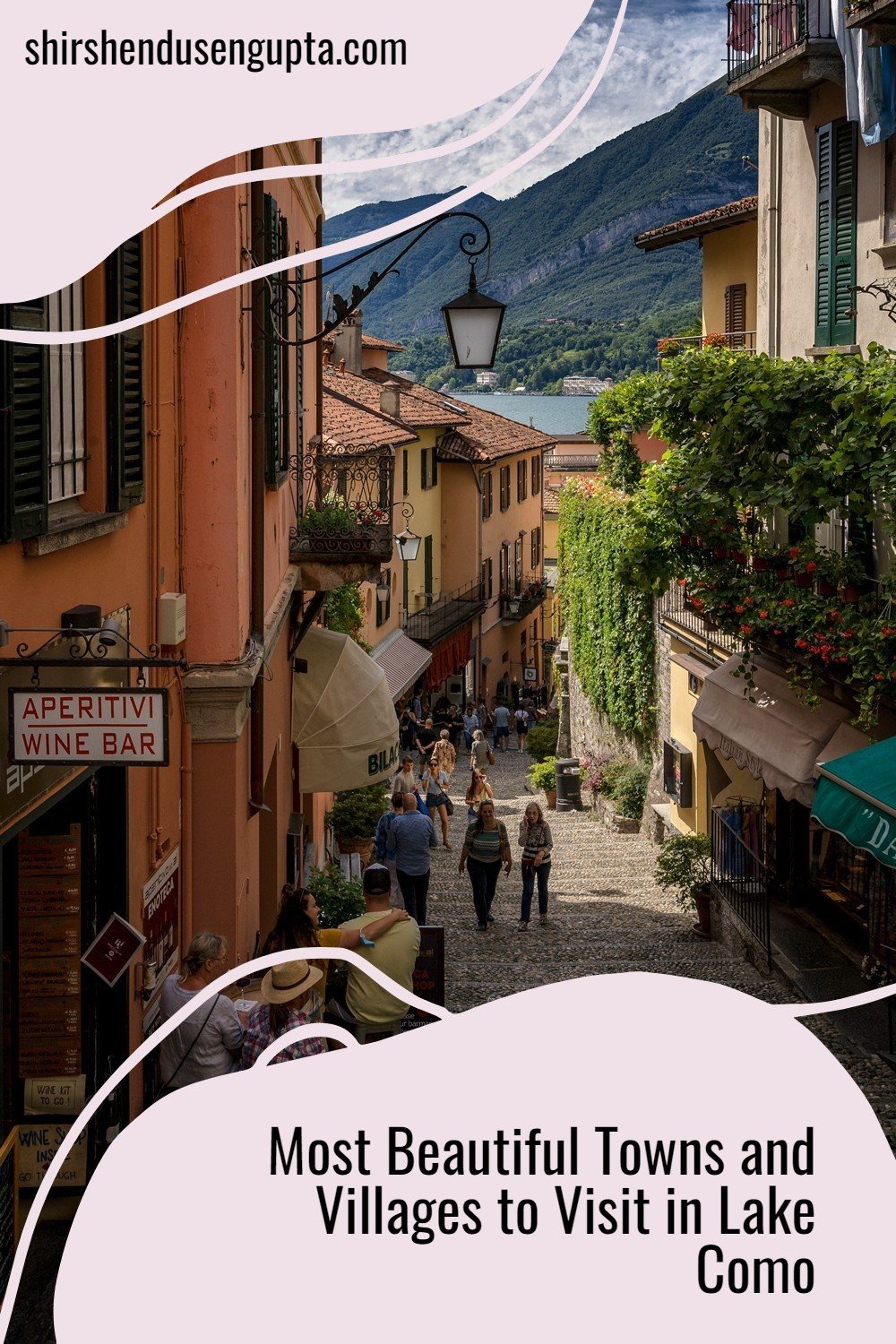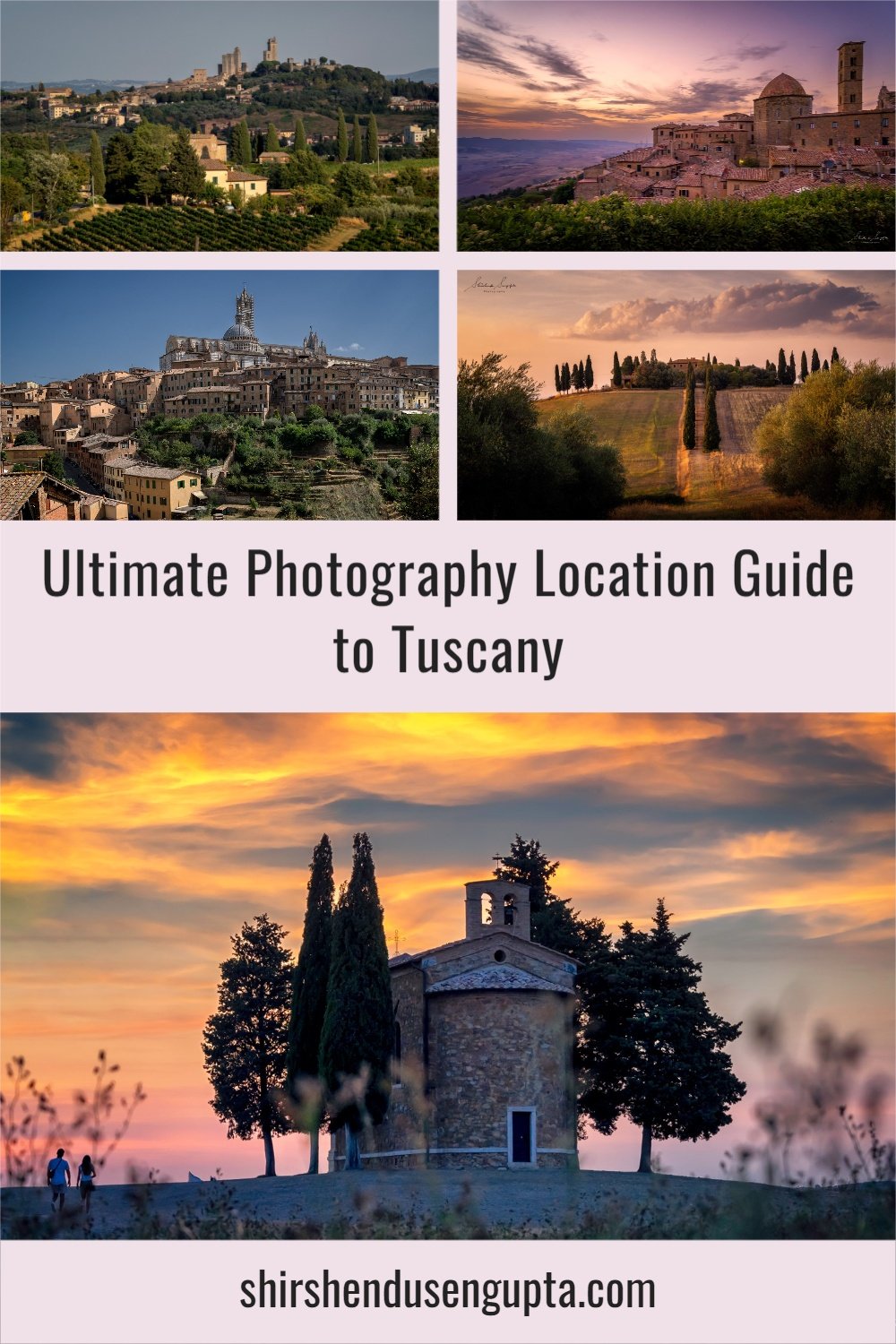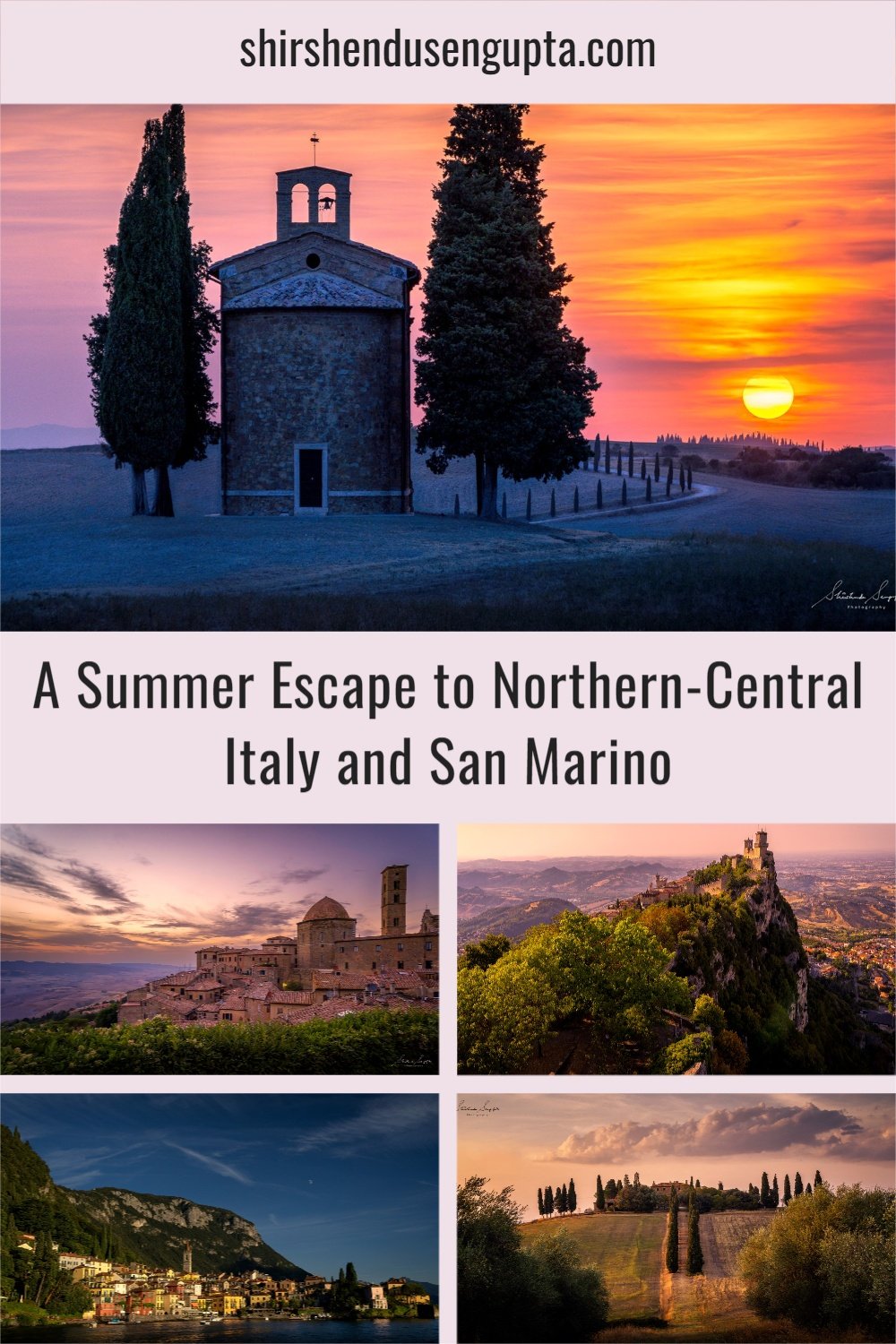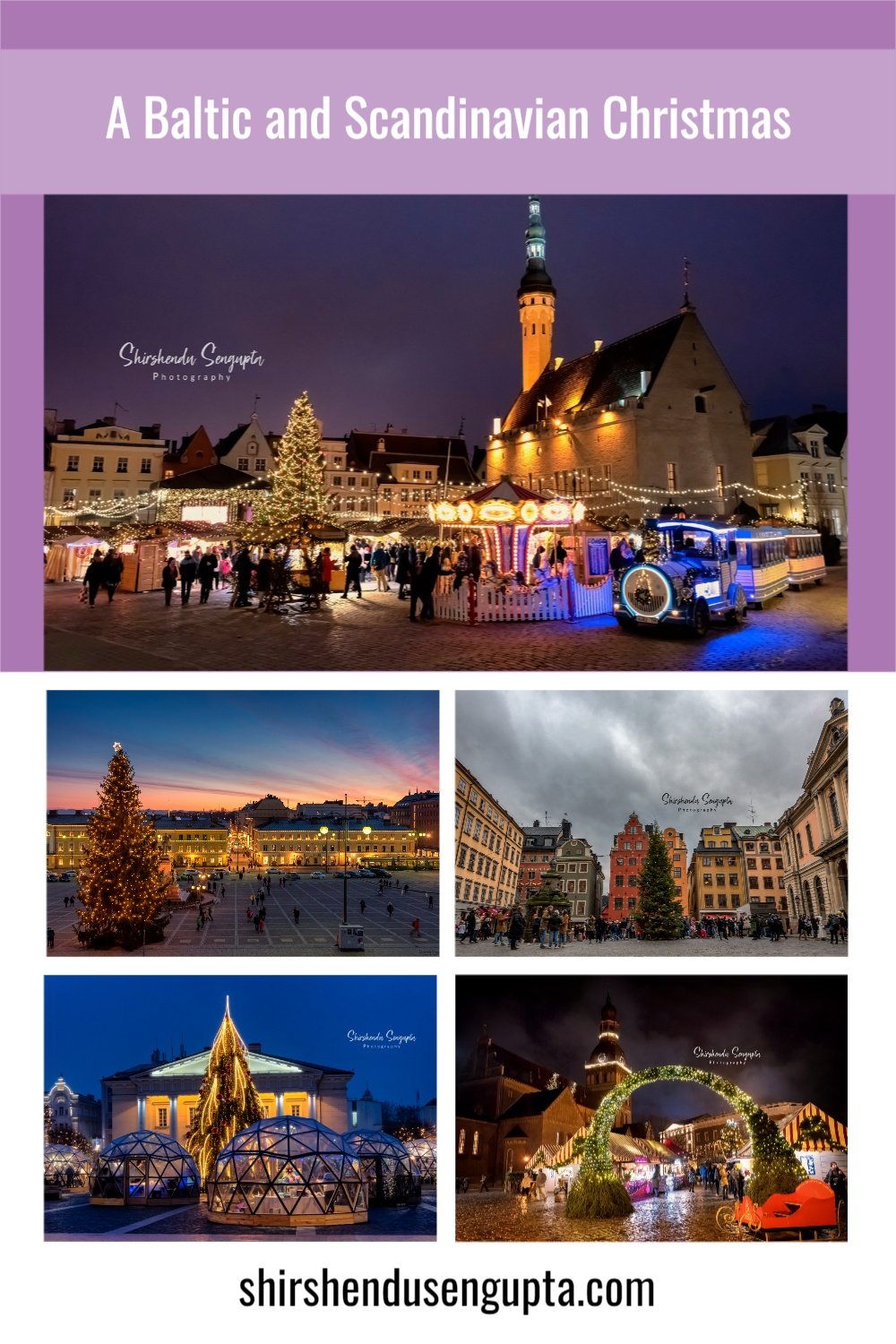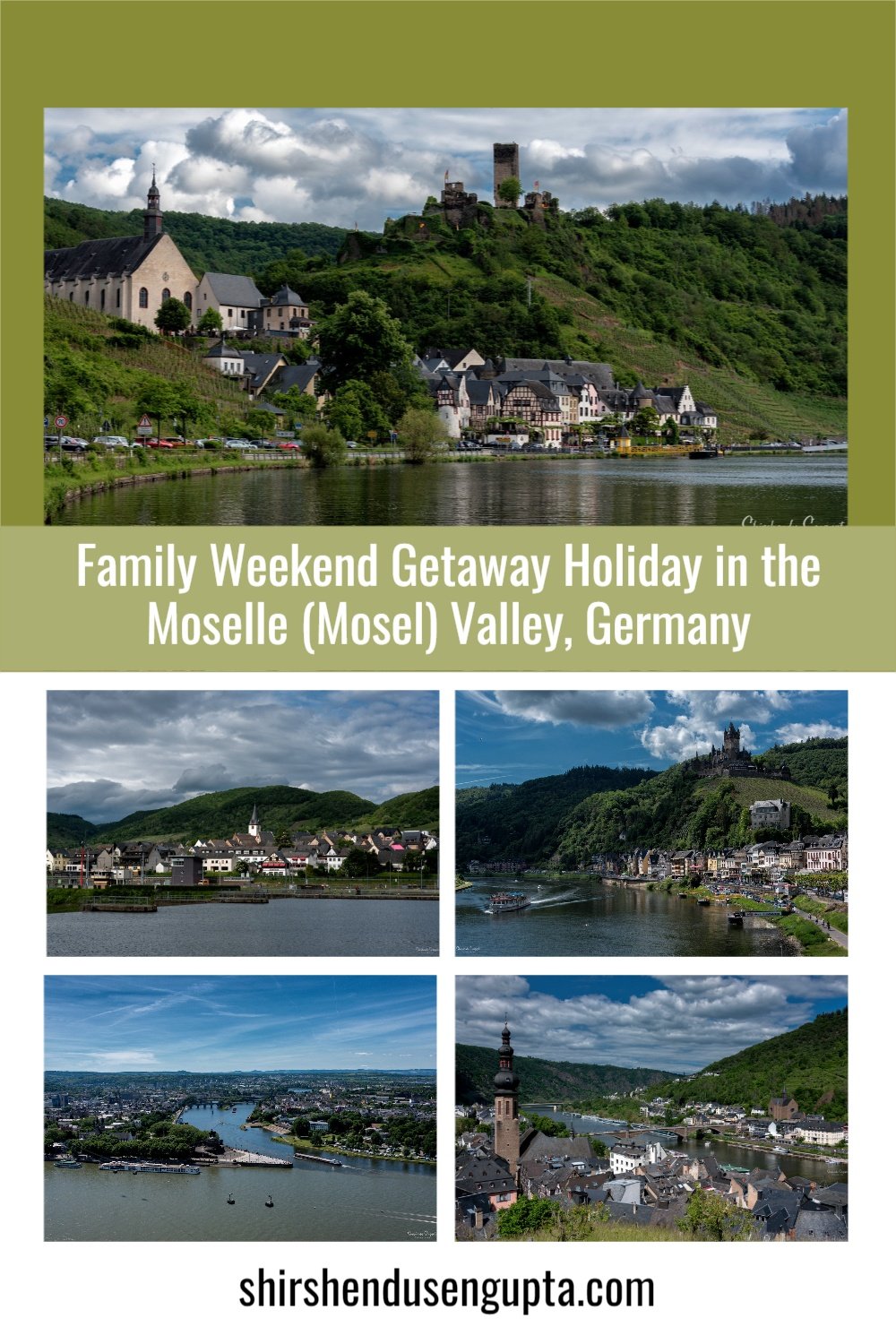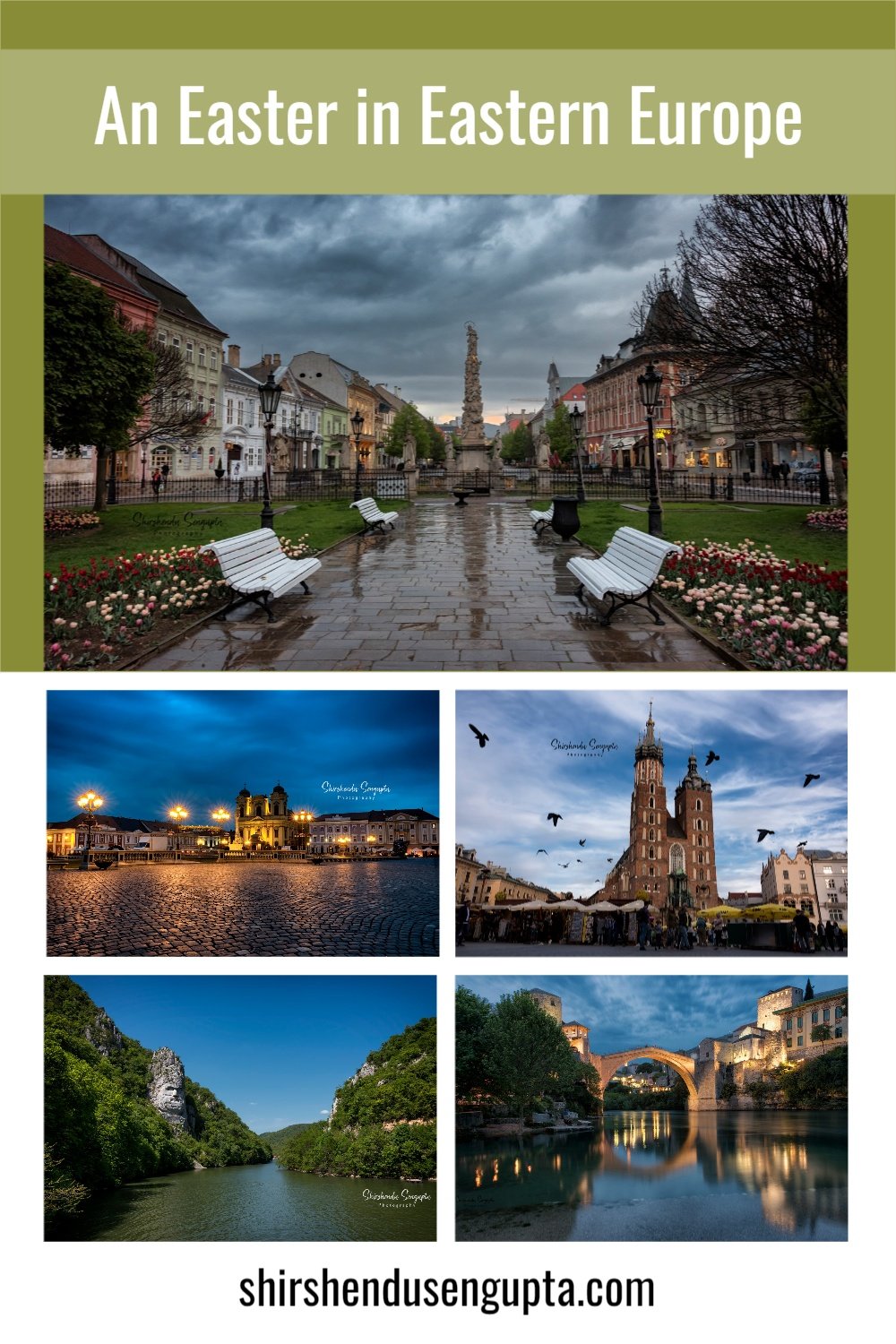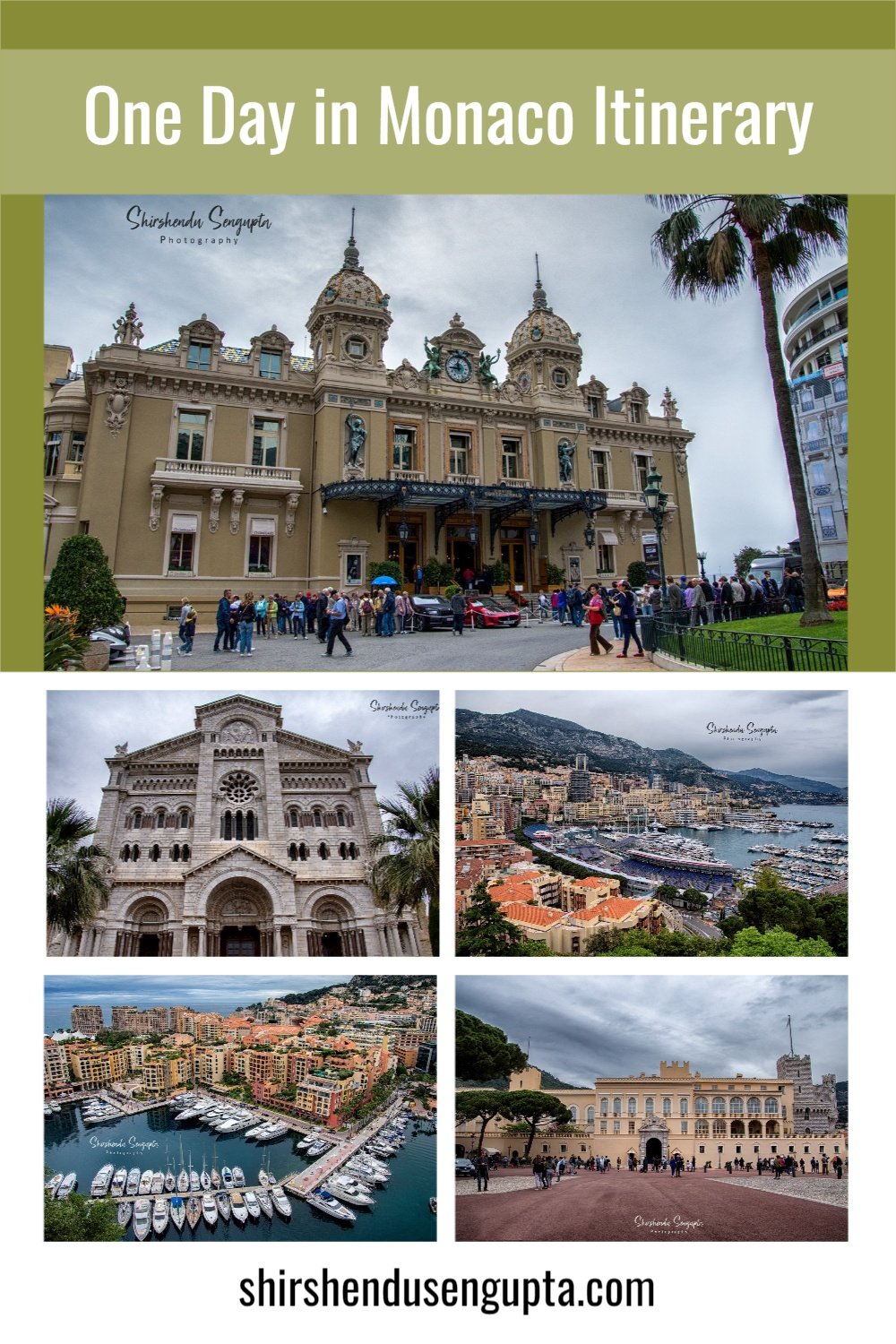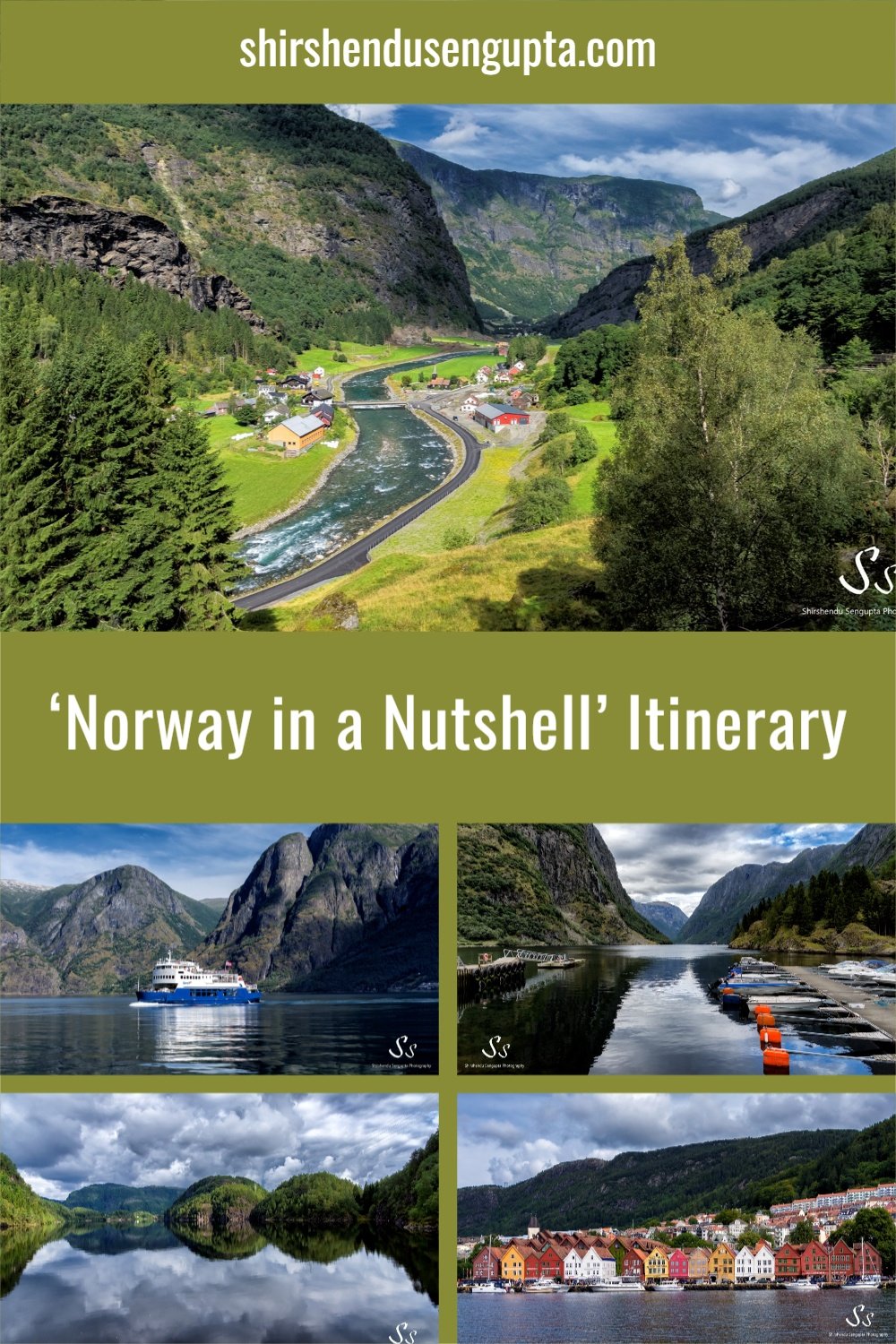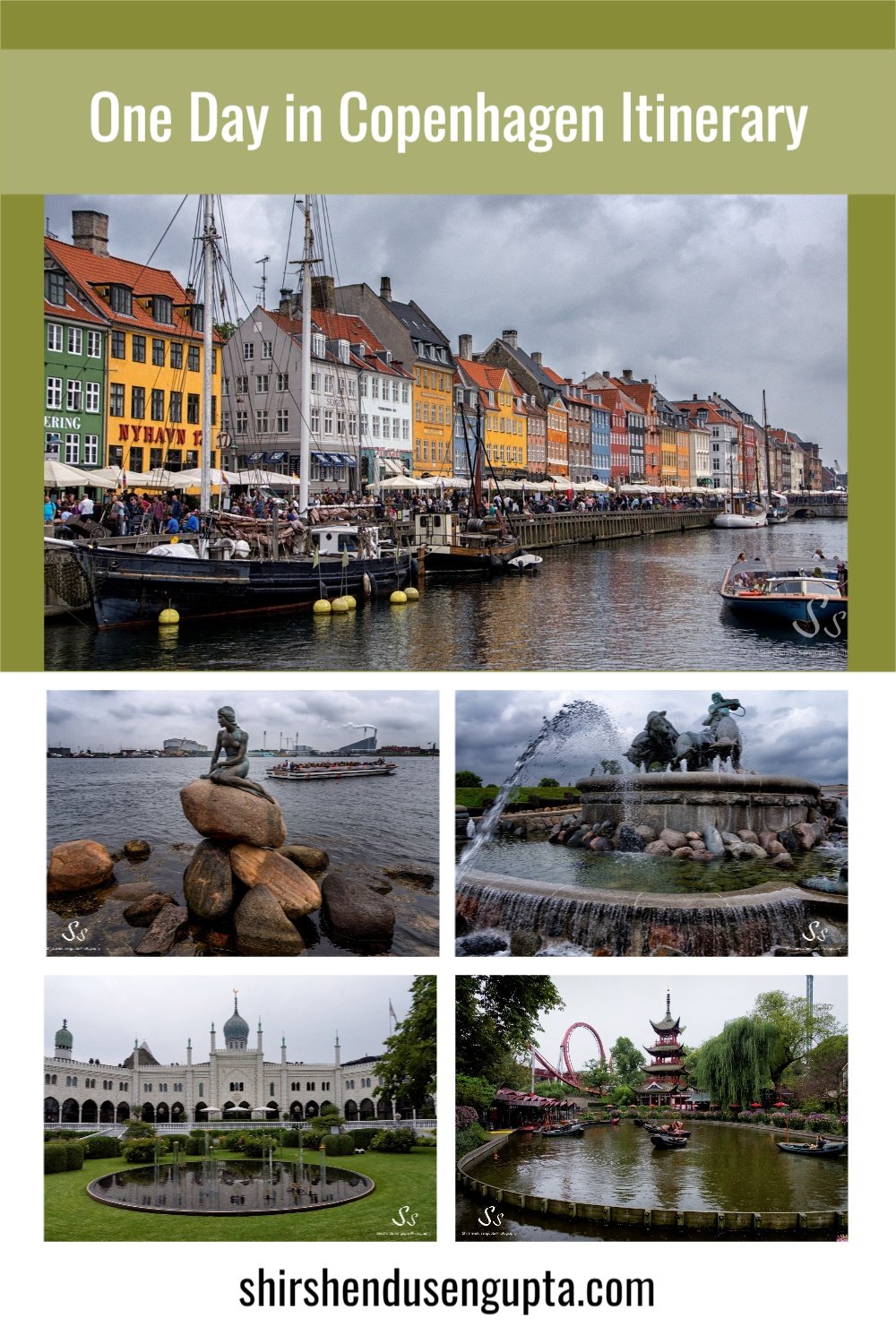An Easter in Eastern Europe | A 6000 km Road Trip across Poland, Slovakia, Romania, Serbia, Bosnia-Herzegovina, and Austria from the Netherlands | Travel Itinerary, Tips, and Tricks
Prologue
Today, I’m going to tell you an Easter story - an epic 6000 km road run that took us from the Netherlands deep into the heart of Eastern Europe. Over the course of this journey, we crossed borders into Poland, Slovakia, Romania, Serbia, Bosnia-Herzegovina, and Austria, each country unfolding like a new chapter in a grand travel tale. It wasn’t just about the miles on the road, but about the shifting landscapes, cultures, and histories that revealed themselves along the way. From the cobbled squares of medieval towns to the winding mountain passes of the Carpathians, from Orthodox Easter traditions to the warmth of people welcoming us into their celebrations, every stop carried its own sense of wonder.
Of course, no adventure is complete without its share of hiccups - an unexpected car breakdown, an unfortunate accident, a border check fiasco, a cop chase, and some other small moments of chaos that tested our patience. But in hindsight, those very challenges added character to the journey, making every triumph and discovery feel even more rewarding. This wasn’t just a road trip - it was a voyage through time, tradition, and the diverse spirit of Eastern Europe. So, let the story begin!
We also embarked on another adventure named A Summer in Eastern Europe | An 8000 km Road Trip across Slovenia, Albania, North Macedonia, Kosovo, Bulgaria, Romania, and Slovakia from the Netherlands | Travel Itinerary, Tips, and Tricks. From winding mountain roads to sun-soaked coastal towns, each stop offered its own surprises and adventures. If you’re curious to follow along on this epic summer journey, be sure to give it a read as well!
The Itinerary
Day 1: Driving from Hoofddorp (the Netherlands) to Dresden (Germany)
Bump # 1: The Car Breakdown
The story begins with a small bump. A few months before this road trip, I joined a new company and ordered a Mercedes-Benz Class C as a new lease car from my employer. But as usual with Mercedes, there was a production delay. Meanwhile, I had been provided a Volkswagen Golf SportWagen as a temporary car. But just on the evening before the start of our 6000 km marathon road run, the car broke down. This was highly upsetting as the whole trip was meticulously planned and 7 hotels across 7 different countries were already booked according to the planned dates. So any delay in the start of the journey would have had a cascading impact on the whole planning. But after a lot of difficult discussions, the Volkswagen dealer was able to arrange a replacement on such short notice. And what a replacement it was. A brand new SUV Skoda Karoq. You rarely get a brand-new SUV as a replacement, but it was indeed a blessing for such a long road trip. So I thought the car problem was finally over, but little did I know that this ‘replacement’ would be the root cause of the rest of the problems to come!
Anyway, getting back to the plot, on a bright sunny Friday afternoon in April, we picked up our son from his school after he finished celebrating Easter with his friends before the school closed for the holidays. We then started our journey from Hoofddorp (the Netherlands) and drove 800 km to Dresden (Germany), which was just a night stopover en route to our first destination, Krakow (Poland). On the way, we stopped for lunch somewhere along the Autobahn, the high-speed German Express Highway famous/infamous for having no speed limits (for most of the stretch). Remember that album ‘Autobahn’ from the German band Kraftwerk (of the ‘Man Machine’ fame), where they made the music from cars zooming by? That’s what Autobahn is all about! But despite the high speed, we took 11 hours to reach Dresden, instead of 8 hours as per Google Maps, owing to the Friday evening traffic and holiday crowd traveling to Poland for the Easter holidays. Little did we know what was more in store for us the next day.
Day 2: Driving from Dresden (Germany) to Kraków (Poland), and then exploring Kraków (Poland)
We woke up at 6 AM, had breakfast, and left for Kraków (Poland), 625 km away from Dresden (Germany). However, despite driving continuously on the fastest lane of the Autobahn and the Polish Highways between 160-190 kph on average, breaking all speed limits of the Polish Highways even crossing my benchmark of 200 kph at times, we took 12 hours to reach Kraków instead of 6 hours as per Google Maps. Why? Guess what we got 6 hours of traffic jam (standing still on the Autobahn) owing to hordes of German holiday-goers in campers and Polish people working in Germany and the Netherlands heading back to their hometowns in trucks for Easter vacation, which is supposedly a big celebration in Poland (which we knew but didn’t take seriously)! After finally reaching Kraków, we checked in to our apartment, freshened up, and headed to the famous central Market Square of Kraków for visiting the Easter market, followed by an evening stroll through Kazimierz, the Jewish Quarter famous for graffiti.
To know more about Kraków, please read our article The Best of Podhale | Main Attractions of the Polish Highlands, Poland.
Day 3: Exploring Zalipie (Poland)
We visited Zalipie, Poland's painted village, driving 110 km through the beautiful Polish countryside. To know more about Zalipie, please read our article The Best of Podhale | Main Attractions of the Polish Highlands, Poland.
Day 4: Exploring Zakopane (Poland)
Went for a trek in the Chocholowska (pronounced as Hohowovska) Valley, a part of the Tatra Mountain National Park in the Zakopane area roughly 110 km south of Krakow. 16 km of hiking (8 km each way) with my 6-year-old son Ricky was a challenge which we took and it all felt worth when we were blessed with a rewarding view of the spring bloom of lush violet Crocus flowers carpeting the landscape at the end of the valley.
To know more about Tatra National Park and Chocholowska Valley, please read our article The Best of Podhale | Main Attractions of the Polish Highlands, Poland.
Day 5: Driving from Krakow (Poland) to Košice (Slovakia) via Nižný Komárnik (Slovakia) and Dobroslava (Slovakia)
The following day we left Krakow (Poland), and drove 250 km through all kinds of good, bad, and ugly roads amidst beautiful Polish countryside landscapes and lush green meadows of rural Slovakia to reach the medieval town Košice in Slovakia. On the way, we covered the unique wooden churches of Nižný Komárnik and Dobroslava in Eastern Slovakia. The whole day was ruled by Harry Potter (on Kindle), intermittent clouds, and hunger with ‘all’ restaurants closed, including the ones at petrol pumps on the highway (where was the highway anyway?!) owing to Easter. We finally ended up managing with the stock of bread we had with us and reach Košice in time to catch the Easter Prayer in the St. Elisabeth Cathedral.
To know more about the eastern Slovak churches and Košice, please read our article Discover Slovakia | 18 Best Things to See in Slovakia.
Day 6: Driving from Košice (Slovakia) to Timisoara (Romania), and then exploring Timisoara (Romania)
Drove 432 km from Kosice (Slovakia) to Timisoara (Romania) crossing the entire country of Hungary on the way, thereby crossing an international time zone (from Central European Time to Eastern European Time), which was our first time-zone change by car. Almost everybody in Slovakia, Hungary, and Romania had been staring at our car’s Netherlands license plate (which says NL) as I guess they’ve hardly ever seen anyone drive from so far to their countries. In fact, when I went to a Romanian petrol pump to buy a vignette (a sticker equivalent to a road toll), he didn’t even know what NL or Netherlands meant. Finally, he understood that the NL in my car’s registration means Olanda (Holland in Romanian)!
The next surprise was the check-in to our apartment in Timisoara. Right in the next street to the old town center, a dangerous-looking building with a dark and creepy stair leading to a Mumbai Dharavi Chawl kind of corridor (looked nothing like the pictures we saw on booking.com when we booked the apartment). However, when we opened the door, it led us to a fully functional and renovated double bedroom apartment with all modern amenities matching the pics we saw while booking. Later I understood these houses (built in the 1800s) were called ‘retro apartments.’ Good Lord. What a relief it was!
To know more about Timisoara, please read our article Instagrammable Romania | The Most Beautiful and Romantic Places to Visit in Romania.
Day 7: Driving from Timisoara (Romania) to Belgrade (Serbia) via Dubova (Romania)
The bumpy part of the journey begins on this day. But before we get there, let’s first talk about the morning. First thing in the morning, we checked out from our apartment in Timisoara and drove to Dubova, 220 km south of Timisoara, to visit the Rock Sculpture of Decebalus and Mraconia Monastery.
To know more about the Rock Sculpture of Decebalus and Mraconia Monastery, please read our article Instagrammable Romania | The Most Beautiful and Romantic Places to Visit in Romania.
Bump # 2: The ‘Replacement Car’ Crash
Now comes the bumpy part of the ride. After visiting Rock Sculpture of Decebalus and Mraconia Monastery, our plan was to have lunch, visit the Bigar Waterfalls in Romania and then go for a long exposure shot of the famous Temple of Saint Sava in Belgrade in the night as we check in to Serbia. However, destiny wanted the day to be a bit more eventful as usual. While standing in parking in front of a small grocery store in Romania, an Audi lost its grip on the loose gravels on the country road and hit the back of our car. So I spent the entire afternoon in a Police Station in a small village (or better explained as a middle of nowhere) in Romania (with my family sitting in a boiling car without lunch all afternoon) explaining (in English) a very complex personal situation along with the Dutch car insurance process that I’m an Indian (I had my Indian passport then), living in the Netherlands (Olanda remember?), the consulting firm ‘ A’ I work for has provided me a lease car Volkswagen Golf from a Leasing company ‘B’ who have my car insured with an insurance company ‘C.’ However my car was broken and hence I got a replacement car Skoda Karoq (paid by my Leasing company ‘B’) from the Volkswagen Dealer who has this car insured with another insurance company ‘D.’ Now in this situation ‘D,’ the insurance company of the Volkswagen Dealer has to contact ‘C,’ the insurance company of my Leasing company, who in turn will contact their insurance dealing company in Romania ‘E’ who will, in turn, contact the insurance company of the Audi owner in Romania ‘F’ and settle the damage among themselves but only if they fill up a Schadeformulier (Damage Form) which is in Dutch and send it to them in the Netherlands! And of course, then the rest followed - denial by Romanian Police (a fairer skinned version of Bihar Police) to follow the Dutch insurance process and coercion to follow ‘their’ process, agree on cash settlements, “don’t teach police what the police should do,” etc., etc. (all in Romanian!) Finally, came out after 5 hours, having explained and convinced them to follow the Dutch insurance process. Now you know my employer ‘A’ has hired ‘the best’!
However, Bigar Waterfalls and sunset at Temple of Saint Sava went in drains as we had ‘lunch’ at 18:15 and had to drive 250 km further to reach Belgrade, Serbia. Google Maps showed it to be a 4-hour drive and I thought it would be a cakewalk for me. But to be honest, it was one of the most stressful drives in my life so far. Out of the 4 hours, we spent the first 3 long hours through National Park Djerdap just climbing up and down on a narrow 2-way pitch dark serpentine mountain road (with the mountain on one side and a cliff drop leading to the Danube on the other) and long lightless tunnels with truck speeding in from opposite direction covering half of my lane with their high beams dazzling my eyes. There wasn’t a single second for the entire 3 hours that the road didn’t keep turning, so I couldn’t rest my eyes off the road for even a moment. Apart from cliff drive, the route later took us through spooky pitch dark, uninhabited (by only mankind, I guess as we saw glowing eyes of foxes running in parallel to our car through the forests at times) dense forests where I was wondering when would a lady in white dress leap out at my car holding a candle in her hand singing “Aaja re Aaja re o mere Dilbarjani!” After 3 hours, we found the first roundabout and the first highway just half an hour before entering Belgrade at midnight.
Day 8: Exploring Belgrade (Serbia), and then driving from Belgrade (Serbia) to Mostar (Bosnia and Herzegovina)
Explored the city of Belgrade till late afternoon (which was a tremendously tedious driving experience). To know more about Belgrade, please read our article The Best of Belgrade | 3 Most Popular Attractions in Belgrade, Serbia.
Bump # 3: The Missing ‘Original’ Papers of the ‘Replacement Car’
After exploring Belgrade's city center, we left the city around 15:30 for Mostar in Bosnia and Herzegovina. However, after traveling till 20:30 past Serbia's final border control checkpoint, we were stopped at the border control checkpoint of Bosnia and Herzegovina due to the car's 'insufficient' documents. Apparently, they found our documents perfect but not our car's as it was missing the green card (registration) and insurance in originals. The Volkswagen dealer had provided me only the copies (since it was a replacement car) and confirmed that they never provide original documents of replacement cars and that this would be sufficient across Europe. I explained that to them and also that with the same papers, I have already traveled through Germany, Poland, Slovakia, Hungary, Romania, and Serbia. But they denied me entry at all costs and told me to go back to Serbia (a young officer repeatedly kept shouting "Back off. You don't enter my country with this car") apparently because all the other countries were in the European Union (EU) but Bosnia wasn't and hence they don't care what Volkswagen dealer told me and wanted everything in originals (I couldn't even make them speak to the Volkswagen dealership since neither the police officials understood English or Dutch nor the Volkswagen dealership was open till then). My wife Jayeeta, with my son Ricky, was obviously a bit scared and told me not to fight with the border police as they had our passports and Dutch resident permits also with them. But I insisted on applying my negotiation skills to crack this situation. My argument in 'English' with the Bosnian 'angry young man' accompanied by an 'angry old guy' continued until 21:00. Finally, because the cars piled up behind my car at the checkpoint, he told me to park it away and meet his seniors. The seniors were more mature and there was a guy who spoke German and English. Finally, after a lot of negotiations, he offered me an option to get 7-day car insurance from an agent located around 1 km inside of Bosnia, which I have to travel alone on foot, leaving my family in the car at the border itself, as my papers were clear but my car’s weren’t. But at least we had agreed on a solution. So I thought, phew, this is over now. But no!
He took me to the insurance counter only to find that the 24-hour counter is closed and the guy is away. He kept calling his number with no response. So he told me to wait outside the counter and pray to God that he returns soon and left as he needed to be back at the border control checkpoint. At this moment, Jayeeta and Ricky were left stranded 1 km away in the car without their documents and dinner for 1 hour already. Then I started using my socialization skills there even without knowing the language. I stopped a guy driving by in a 'wild wild west' kind of junk car and tried to explain to him the situation in a sign language akin to 'dumb charades.' I think he understood but didn't know how to help and told me to repeatedly keep calling the number printed on the insurance counter's door. I did that and after 20 times, a man picked and spoke in Bosnian. When I insisted on English, he handed it over to a woman. She translated my story to that person over the phone and said somebody will be there within 10 minutes. I waited, but nobody came. Then I stopped an old uncle riding a bicycle and he finally gave me the most crucial lead to crack the case "He drinks beer in the bar." I rushed to the nearby bar to find the guy drinking beer. I literally nabbed him, brought him to the counter, paid €70 (which I could reimburse from my car's Leasing company when I would be back in the Netherlands) for 7-day insurance in Bosnia, handed over to the border police, collected our documents back, shook hands, expressed my gratitude and entered Bosnia and Herzegovina at 21:45 with 4 hours drive through pitch dark serpentine mountains ahead of us to Mostar. On the way, I also called the apartment owner at Mostar and said I will reach by 02:00 and she asked me not to worry as she will be waiting for us. If you think this is enough for a day, keep reading. You are in for more surprises.
Bump # 4: The Cop Chase
After we left the Bosnian border for Mostar, I started driving faster to reach the hotel by 02:00, obviously. I drove more cautiously when we passed through the mountains, but I drove faster while we passed through the villages. Around 01:00, while I was speeding at a village around 100 kph, while the limit was 50 kph, a person in a jacket standing close to the road flickered a torch at me. Once I zoomed past him, I realized that it was the police asking me to stop, but I was pretty far by then. Within 5 minutes, I had a hooting police car chasing me and asking me to pull over. Then the obvious followed - explanation of the situation, altercation, “You have to pay for a €50 ticket but only in the police station as we don’t have the ticket book with us right now!” etc., etc. Finally, I applied my negotiation skills again and avoided going to the police station and further delaying our travel by offering them €40 (saved €10 after bargaining for 5 minutes) in cash without a ticket. They were so obliged that they escorted us from the village till the highway to Mostar so that we can reach our apartment ‘safely.’ However, the ‘Series of Unfortunate Events’ doesn’t end here too.
Bump # 5: The Sleeping Apartment Owner
When we reached Mostar around 03:00, I could not find the address that was mentioned in my booking. So I called up the owner who lived nearby and was supposed to wait for us. But after I ringed her at least 20 times and she didn’t pick up, I realized she’s fallen asleep. So I did the only thing that occurred to me then. I knocked on the doors of the neighbors and woke up almost the entire neighborhood. Soon the owner arrived on the spot apologetically mentioning that her house was undergoing construction owing to which the number plate’s been taken down. With that, we were finally in our apartment by 04:00, and the bumpy part of our journey was over!
Day 9: Exploring Mostar (Bosnia and Herzegovina)
We spent the whole day exploring the city of Mostar on foot. To know more about Mostar, please read our article The Chronicles of Bosnia and Herzegovina | The Best Places to visit in Mostar and Surroundings.
Day 10: Exploring Blagaj Monastery, Medugorje, and Kravice Waterfalls (Bosnia and Herzegovina)
We drove to Blagaj Tekija (A Dervish monastery) set up in a stunning location, the famous St. James Church of Medugorje, rich with legends of sightings of the Virgin Mary, followed by the beautiful Kravice Cascade Waterfalls, all within an hour drive from Mostar. On the way to Blagaj Tekija (Monastery) we were welcome by mesmerizing Bosnian countryside scenery.
To know more about Blagaj Monastery, Medugorje and Kravice Waterfalls, please read our article The Chronicles of Bosnia and Herzegovina | The Best Places to visit in Mostar and Surroundings.
Day 11: Exploring Pocitelj (Bosnia and Herzegovina)
We drove 35 km south of Mostar to Pocitelj, a historic village with a fortress. After getting there, it was some hiking with a child of 6 years through rugged terrain, but at the top of the fortress ruins, the views were worth a shot.
To know more about Pocitelj, please read our article The Chronicles of Bosnia and Herzegovina | The Best Places to visit in Mostar and Surroundings.
Day 12: Driving from Mostar (Bosnia and Herzegovina) to Zell am See, (Austria)
We drove 900 km, crossing half of Bosnia and Herzegovina, the entire countries of Croatia (one of the most comfortable and scenic highways of Europe with mountains on one side and the Adriatic Sea running on the other) and Slovenia (with the Julian Alps looming over the horizon) and half of Austria (with the majestic Austrian Alps running in parallel right next to the road) to reach the town of Zell am See (situated on the Lake Zell) in the Kaprun municipality of Austria amidst all kinds of temperature changes and weather swings – started from the scorching sun in Mostar, then drove through severe rain, fog and finally ended up with some severe snow in Kaprun.
Day 13: Exploring Zell am See-Kaprun (Austria)
With the whole day raining alongside a thick blanket of clouds enveloping the mountains, we decided to stay back below the mountains and spent the entire day exploring the Zell am See-Kaprun region by car. However, after a while, the fog lifted, clouds cleared and the sun came out and we got the long-awaited opportunity to capture the mesmerizing beauty of the place through our lens.
To know more about Zell am See-Kaprun, please read our article An Alpine Weekend in Zell am See-Kaprun, Austria.
Day 14: Exploring Kitzsteinhorn (Austria)
In the morning we drove to Kaprun Kitzsteinhorn Bergbahn Talstation and parked our car there. From there, we changed 4 cable cars to reach Gipfelwelt 3000 (Kaprun National Park Panoramic Viewing Platform), also known as Top of Salzburg Viewpoint on top of the Kitzsteinhorn mountains with a view of the Kitzsteinhorn glaciers. After that, we spent the whole day on the Kitzsteinhorn mountain and had lunch in the restaurant at the top of the mountain.
To know more about Kitzsteinhorn, please read our article An Alpine Weekend in Zell am See-Kaprun, Austria.
Day 15: Driving from Zell am See (Austria) to Hoofddorp (Netherlands)
Drove back 1000 km from Zell am See (Austria) to Hoofddorp (the Netherlands), crossing half of Austria and Germany.
Learnings, Tips, and Tricks
1. Choose the right season for visiting these countries
Before you set out to travel to any country, the first thing you need to research is the right season to travel. E.g., The best time to see the Crocus flowers in the Chocholowska Valley is Spring (Early to late April) when we were there. But during this time, the iconic mountain lakes Morskie Oko in Zakopane area, Poland, and Strbske Pleso in Slovakia were frozen, and hence we had to skip them. And in summer these places could be very touristy. So you have to set your priorities and decide your moment of travel.
2. Check for festivals during your travel for traffic and closure of shops
Usually, Hoofddorp (the Netherlands) to Krakow (Poland) is 1200 km and doable in a 14-hour drive in a single day. But for us, it took 23 hours despite driving continuously on the fastest lane of the Autobahn (German Express Highway with no speed limits) and the Polish Highways between 160-190 kph on average, breaking all speed limits of the Polish Highways (even crossing my benchmark of 200 kph at times) as we got 9 hours of traffic jam in total owing to hordes of people (loads of them from Germany) coming to Poland for the Easter vacation which is a big celebration in Poland (now we know!). Also, on the day of Easter, while we were traveling from Poland to Slovakia, we faced a severe challenge as ‘all’ restaurants were closed, including the ones at petrol pumps on the highway, owing to Easter. We finally ended up managing with the stock of bread we had with us.
3. Decide your stopovers wisely
While traveling from Hoofddorp to Krakow had two alternative routes (either via Berlin or via Dresden) and we chose the Dresden route because the accommodation there for a night stopover is much cheaper than Berlin. So think about the money factor while deciding your stopover city as it can vary significantly among cities. Also try to stay in bigger cities for the night (unless you’re camping out) and travel to the remotest corners during the day by car since facilities like restaurants, supermarkets, medicine shops, ATMs, etc. are simply ‘absent’ in the smaller towns and villages in Eastern Europe.
4. Discuss vaccinations with your family physician before you travel to East European/Balkan countries (especially if you plan to go camping in the woods or mountains)
We skipped this step, being overconfident, having traveled to many countries in Europe in the past, but after returning, we realized that the countries/places we visited might have posed a threat of Tick-borne Encephalitis. So better to be safe than sorry.
5. Keep the green card of the car with you in original (especially for non-EU countries)
As I mentioned in my story, for this vacation, I was driving a replacement car since my company lease car was broken and the dealer provided me with only copies of the green card (the equivalent of registration and insurance papers), saying that this will suffice for all countries in Europe. However, we were stopped at the border control checkpoint of Bosnia and Herzegovina (since apparently in non-EU countries, copies don’t work) and after plenty of negotiations, harassment and delay, we ended up buying seven-day Bosnian insurance for the car.
6. Do not forget to buy stickers/vignettes for your car
Before you travel by road to any country in Europe, you need to research the stickers/vignettes (equivalent to road tolls or emission certifications) you need to paste on your car's windscreen before entering that country. If you are caught without stickers, fines can range between €50 and €200. Also, know the translation of your car's registration country in the local language while you go to buy the vignettes. As I told in my story, when I went to a Romanian petrol pump to buy a vignette, he didn’t even know what NL or Netherlands meant (I guess they’ve hardly ever seen anyone drive from so far to their countries). Finally, when I selected the drop-down on his computer, he understood that the NL in my car’s registration means Olanda (Holland in Romanian).
7. Fueling across countries
Before you travel, check gasoline/diesel costs across countries to decide which country it’s cost-effective for you to refuel. Then do a calculation of the total gas cost that you have to bear for your trip (combining all the countries where you want to refuel) to have a clear view of your expenses upfront to avoid any surprises.
Also, if you are driving a company lease car and have a fuel card paid by your company (like I have an all Europe Shell Card), research upfront on the Shell Station Locator and plan those are fueling stops in your itinerary at regular intervals lest you run out of fuel since Shell does not have many stations across these countries (in fact Shell is not even there in the parts of Romania we drove through, Serbia, Bosnia, and Herzegovina, Croatia, and Slovenia). Also, check upfront on the Shell Station locator if it sells the kind of fuel your car uses (e.g., in Slovenia I found only ‘Shell Truck Diesel’ pumps while my car used petrol/benzene/Euro 95), if it’s open 24 hours, if it’s a manned or unmanned pump, etc.
8. Check the terrain before you travel and accordingly decide your driving timing
We entered Serbia from the Rock Sculpture of Decebalus in Romania, driving through the National Park Djerdap after sunset (since I lost a lot of time in the police station after the accident), which consisted of a two-way pitch dark serpentine mountain road (with the mountain on one side and a cliff drop leading to the Danube on the other), long lightless tunnels with trucks speeding in from opposite direction with their high beams dazzling my eyes and dense pitch dark, uninhabited forests with foxes running in parallel to our car. So use ‘Google Earth’ before your travel to check the terrain and elevation and decide your travel time. I would suggest avoiding driving through rugged landscapes at night as most inter-country roads and even highways in Europe do not have street lights. Also, many Eastern European countries do not have good roads, making it very difficult to drive at night. On top of that, a touch of rain or snow can make the roads slippery and thereby more dangerous. So don’t drive on unknown mountainous terrain overnight unless it is essential.
9. Use high beams at night
As I said, most inter-country highways in Europe do not have street lights. Hence switch on your hi-beam if you plan to drive overnight, especially for mountainous terrain, and momentarily switch them off when you see cars coming in from other direction lest you dazzle their eyes.
10. Carry the supermarket with you
In many of these remote locations in Eastern Europe, it’s incredibly challenging to find supermarkets. Only in bigger cities, you might find a decent-sized supermarket after some search. To get a large-sized supermarket ask your accommodation (try to stay in bigger cities unless you are camping out) to provide you a list of supermarkets nearby with their addresses and telephone numbers. Also, inquire about their closure timings. Once you are at the supermarket, convert the booty of your car into a mini mobile supermarket.
11. Carry cash
In almost all of Eastern Europe, European credit cards are accepted in fuel stations and bigger restaurants, but apart from that for all other local buying and casual fooding ‘Cash is King’. So, withdraw cash in the local currencies according to the respective currencies ‘as soon as you see’ an ATM (which is not abundantly available), and don’t worry about leftover local currency. Before you leave that country, exhaust the residual cash in buying sandwiches/chips/water from a fuel station and stock them in your car (you’ll use them anyhow). Buying local souvenirs to exhaust the local currency is also a good idea.
12. Try to cook
If you are going for an extended vacation in Eastern Europe, getting food of your choice could be challenging since the cuisines everywhere are authentic (apart from bigger cities where you will find Italian, Chinese or Indian cuisines). Especially for vegetarians, there aren’t a lot of options to choose from. So try stocking the food of your choice from the supermarkets in the refrigerator of your accommodation and then cook yourself (at least one meal a day, e.g., the dinner in the night upon return). So always take accommodation with a kitchen.
13. Spend more time in Budapest than in any Hungarian countryside
In my opinion, Budapest (which certainly is what Rick Steves calls the ‘Best of Hungary’) is a more exciting place to be in than any other countryside village when in Hungary. We did Budapest before, so we did not make a stopover in Hungary this time around.
14. ‘Don’t’ drive in Belgrade
Belgrade is the first city in Europe so far where I consider driving really really difficult. For people who find driving in Brussels or Paris challenging (which I see as a walk in the park), please don’t even dream about driving in Belgrade. You will wake up with bloody eyes. It’s horrible and can put many Indian big cities to shame! Apart from the lack of traffic rules, lack of street signals (most of them don’t work and simply blink yellow; instead there are traffic police showing signs by hand, which is the first time I saw in Europe), there is tremendous traffic. A drive of 3 km through the city in any direction at any time of the day takes roughly 45 minutes. And there is absolutely no street parking to be found and no parking garages in close vicinity of major tourist attractions.
15. If you are planning to ski, Kaprun is where you need to be
Apart from a stunning visual setting, Kaprun is a great location for skiing (a 1000 km drive from the Netherlands doable in a day within 12-14 hours). But check the timing of the last cable car from the top of the Kitzsteinhorn mountain. While we were there, the last cable car from the top-level left at 15:30. However, the cable cars at lower levels continue to run till evening and there are skiing facilities at each of these levels.
16. Places in our itinerary that we missed
Apart from skipping the mountain lakes Morskie Oko in the Zakopane area (Poland), and Strbske Pleso (Slovakia), intentionally as they were frozen, we also missed a couple of locations in our itinerary owing to delays due to Easter traffic and unforeseen circumstances like accidents, etc. They are Wieliczka Salt Mine just 15 km south of Krakow (Poland) which’s the oldest salt mine in the world housing the world’s biggest underground church, made entirely from salt, and Bigar Waterfalls (Romania) that is known to be one of the most beautiful waterfalls in Europe. You can choose to make them a part of your itinerary if you wish to.
17. If you want to visit bigger cities
Apart from these, you want to visit bigger cities, then Bucharest, the capital of Romania, or Bratislava, the capital of Slovakia are worth considering. I'm not too fond of bigger cities as they are often touristy and offer fewer photography opportunities. Hence they were not on my itinerary. We did not cover Bratislava (capital of Slovakia) on this trip since it’s close to the Austrian border. We intended to enter Austria after covering Romania, Serbia, and Bosnia and Herzegovina and not directly from Slovakia. We covered Bratislava on a later trip. You can also check out Innsbruck, Hallstatt, and Salzburg in Austria, Dubrovnik and Split in Croatia, Budva, Perast and Kotor in Montenegro, Ljubljana, the capital city of Slovenia, and Lake Bled, which we did before (and hence weren’t a part if this trip) which are also fantastic places to visit. I’ve written separate articles about these places to help you plan your trips further. Please feel free to check them out.
Epilogue
So that brings us to the end of our ‘An Easter in Eastern Europe’ journey. Please let us know in the comments below if you enjoyed reading this article.
And if you’re curious to follow along on our other epic adventure, A Summer in Eastern Europe | An 8000 km Road Trip across Slovenia, Albania, North Macedonia, Kosovo, Bulgaria, Romania, and Slovakia from the Netherlands | Travel Itinerary, Tips, and Tricks, be sure to give it a read as well. Until then, merry traveling and happy shooting!
Pin the article
Bookmark the article for reading later!
Want to license/buy photos in the article?
License photos for commercial/editorial use or buy photo prints!
Want us to write an article for you?
Articles for magazines, newspapers, and websites!
Watch our Videos
Check out our videos on our Youtube Channel!
Join the Newsletter
Get updates on our latest articles!
We respect your privacy. Read our policy here.


